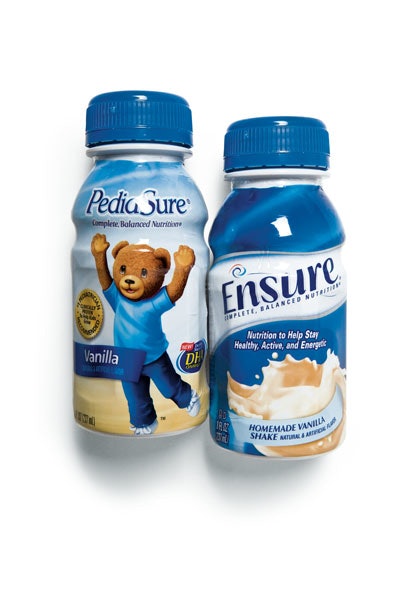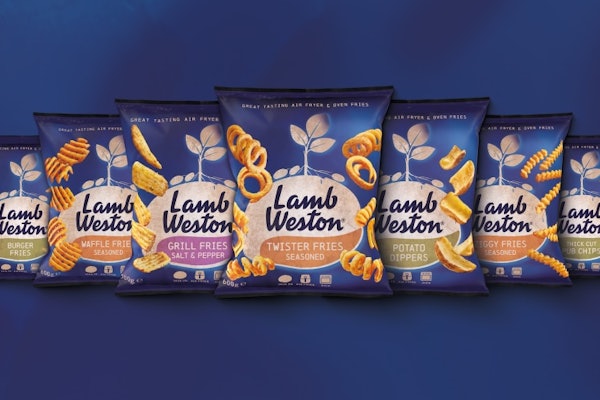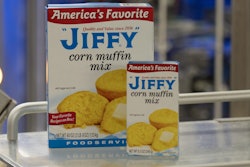Abbott Park, IL-based Abbott is a global, broad-based health care company devoted to the discovery, development, manufacture, and marketing of pharmaceuticals and medical products, including nutritionals, devices, and diagnostics. The company employs more than 72,000 people and markets its products in more than 130 countries.
The company was recently named to the Dow Jones Sustainability World Index and Sustainability North America Index for the fifth consecutive year, and was one of just two U.S.-based companies in the pharmaceutical industry category listed on both indices. The Dow Jones Sustainability World Index ranks Abbott among the top 300 of the world’s largest 2,500 companies, based on an assessment of economic, social, and environmental performance.
Abbott operates three lines of business—pharmaceuticals, nutritionals, and medical products. There are divisions within each of those groups. Abbott Nutrition includes the Abbott Nutrition Products Division (its nutrition business), and Abbott Nutrition Intl.
The sustainable packaging initiative is company-wide. The Abbott Nutrition Products Div., Global Pharmaceutical Operations Div. (part of the Pharmaceutical Products Group), Abbott Diabetes Care Div., Abbott Diagnostics Div., and Abbott Vascular Div. (all Medical Products businesses) have been the most active.
In this interview, Pete Macauley, Abbott Nutrition’s director of global packaging technology, gives an overview of the company’s ambitious sustainability goals. Macauley is also the lead of the cross-divisional team working on the company’s overall sustainable packaging initiative.
PW: What are your responsibilities related to packaging and sustainability?
Macauley: My primary responsibility includes development and implementation of all packaging innovation and technology for Abbott Nutrition’s global brands. We support production at 12 manufacturing sites worldwide and a number of third-party manufacturing locations.
PW: How does Abbott define sustainability?
Macauley: We have three main businesses—pharmaceuticals, nutritionals, and medical products. Abbott is committed to safeguarding the environment, providing leadership as a responsible global citizen. We define sustainability in terms of how we operate all aspects of our business day-to-day. We view sustainability as just as important as what we produce, how we produce it, and where we deliver that product.
PW: So how do you explain the company’s sustainability strategy?
Macauley: Safeguarding the environment is one of our sustainability goals. Sustainable packaging and minimizing the impact of packaging on the environment fall into that realm.
PW: A company press release talked about making progress towards the 5% reduction of packaging used by 2013. When we talk about that reduction amount, is it in terms of weight?
Macauley: Yes. Weight is the way we measure the resource-efficiency of our packaging.
PW: When you say 5% it sounds modest, but that’s probably not the case when you consider the overall picture, is it?
Macauley: I understand the point because you talk about the five-percent figure and ask if it is really challenging. Each industry and company has its own unique challenges. We look at safety, functionality, and regulatory issues. So five percent is significant for us, given the requirements and technical challenges. One example is where we pulled out two grams of the weight of a plastic bottle [that resulted in] saving a considerable amount of resin. Our objective is to have a positive impact on the environment.
PW: How does Abbott work with its packaging suppliers to help meet these sustainability initiatives?
Macauley: We have a purchasing group that works with our suppliers, and we provide guidelines to all of our suppliers. We also look for initiatives they have in place within their companies that demonstrate a commitment to the environment. For example, on paperboard we are committed to working with suppliers that focus on using renewable certified materials. We expect our suppliers to have a strategy that addresses sustainability. Our intent is to challenge them, just as our customers are challenging us in our own sustainability efforts.
PW: Please tell us about the 2008 internal packaging design guideline document mentioned in a recent Abbott press release.
Macauley: Leading up to the 2008 development of our cross-divisional team, all Abbott packaging groups had sustainability initiatives in place on a limited basis. The intent of the guidelines was to pull it all together and provide consistency across all of the divisions in terms of establishing what the sustainability design priorities would be. We developed standards so that when we talk about reducing or recycling or renewable resources, we’re on the same page, which I believe is still a challenge across industries.
PW: Did the Walmart scorecard help you out in developing these standards?
Macauley: Yes it did. We try to work with Walmart and all of our retailers as closely as we can. We worked with them on the scorecard, and we believe that Abbott is in full compliance in meeting their expectations. And we are an active member of the Sustainable Packaging Coalition in terms of developing industry-wide standards.
PW: That Abbott press release also mentioned a pilot program for shipments of physicians’ samples that require refrigeration. Can you describe the reusable box used for such sample shipments?
Macauley: It’s for physician samples of a biologic that treats Crohn’s disease. [The cold-chain box is the Greenbox Thermal Management System from Entropy Solutions]. We deliver product in the box to physicians. The boxes are shipped from the physician’s office to the reclamation center, where they are inspected, cleaned, and returned to Abbott for use with another shipment.
PW: When you look at designing a new package or redesigning an existing package for enhanced sustainability, what are some of the most important considerations?
Macauley: We have to address safety, functionality, and the regulatory requirements of every packaged product, and we have to deliver those across all of our businesses. Then we examine other areas from a design aspect. We look at reducing or removing materials, reusability, recycling, and the ability to use renewable materials. Much of our focus across the board is on source reduction. Do the materials meet our safety, functionality, and regulatory requirements, and can they provide us with the lightest weight or density? Do we have excess materials in the packaging that may not be necessary, both from the standpoint of our retailer customers and our consumers?
PW: Does Abbott’s overall size and infrastructure help or hinder sustainability efforts?
Macauley: From my perspective, it’s been a great help. We have a strong culture of doing business with sustainability in mind, so the size and diversity of the company really allowed us to bring in a lot of good new thinking when we merged the sustainability initiatives together across all of our businesses.
PW: Abbott’s sustainability focus is on packaging materials or commodities, but the initiative is broader than that, yes?
Macauley: Yes, Abbott has goals to reduce consumption of energy and water within our facilities, and cut greenhouse gas emissions. So if you look at our global citizenship report, we’ve established significant goals to deliver on all of those, with the expanded use of sustainable packaging being an important part of our commitment to safeguard the environment.
PW: Does that mean that Abbott is looking for more efficient packaging machinery?
Macauley: We are always looking for new and more efficient equipment. It’s really going to be an energy play as well. The packaging initiative is focused more on materials, but we are going to put much more emphasis on equipment down the road.
PW: Has the economic recession lowered your sustainability priorities?
Macauley: Absolutely not, because we’ve been driving this packaging effort hard for the last two years. We want to show our leadership within the industry. Sustainable packaging is just as important today as it was two years ago, and will be just as important two years from now, regardless of the economic situation.
PW: How do economics fit into the overall sustainability picture?
Macauley: Overall, when we go after both social and environmental benefits, we still need to show an economic benefit. So as we look at materials and consider source reduction, efficiency improvements, and using less packaging, that also translates into economic benefits. In some respects, we have always been going after sustainable packaging, even though it hasn’t always been called “sustainable packaging.” We’ve continuously worked to optimize our packaging, be it the primary or secondary package. When we reduce weight or improve efficiency, we’re typically also gaining a cost benefit. But it is also about more than weight. It is also about the type of materials we use, and exploring new approaches, like the reusable Greenbox.
PW: What are some of the biggest challenges you see out there regarding package sustainability down the road for Abbott?
Macauley: It’s balancing the integrity of the package and incorporating new and/or different materials into our product and package designs, while still delivering on customer expectations.
PW: To that end, is Abbott working more with retail customers and consumers on these sustainable packaging initiatives?
Macauley: We maintain a close relationship with all of our consumers and retailer customers, and receive feedback on a regular basis. For the most part, consumer interaction with a package design involves either qualitative or quantitative market research, direct feedback, and through our sales and marketing teams.



























